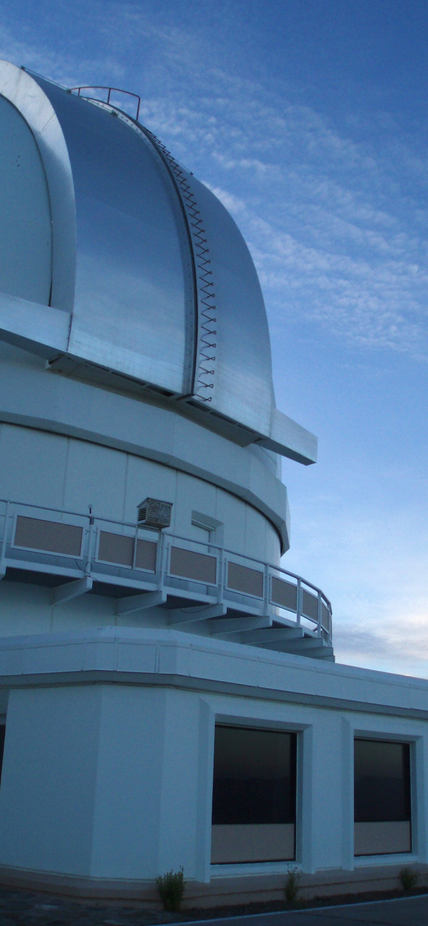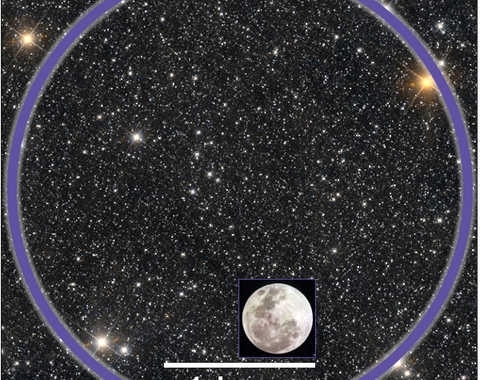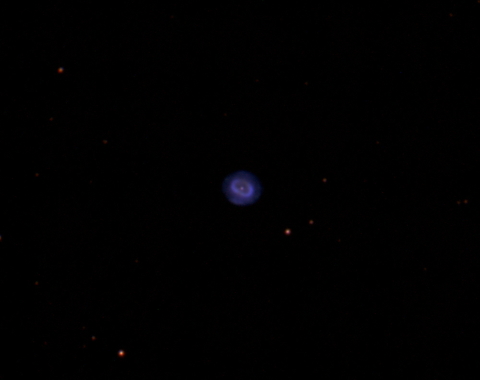Overview
The 2.5-meter (100-inch) Irénée du Pont telescope has been in operation at Las Campanas Observatory since 1977. The telescope was a result of a gift in 1970 from Mr. and Mrs. Crawford H. Greenewalt to the Carnegie Institution of Washington, which supplied supplemental funds. Basic considerations in designing the telescope were that it be as versatile, reliable, and convenient as possible for its size, and that it have excellent optical performance to match the natural observing conditions offered by the site. Because there were no plans at the time to build companion instruments, such as a large Schmidt for wide-angle surveys, the du Pont telescope was designed to have an exceptionally wide field for direct photography.
Bruce H. Rule and an associated group of engineers and designers at Carnegie produced the basic designs for the telescope and its rotating dome. A fork mounting with a short tube was employed, with a "flip top" to facilitate quick changes between the f/7.5 Cassegrain and f/30 coude observing configurations. (The coude focus, however, was never implemented.) The dome is provided with a central instrument elevator or "ram" to expedite changing instruments at the Cassegrain focus and to provide for removal of the primary mirror for aluminizing.
The primary mirror, of pure fused silica, has a focal ratio of 3.0. The lightweight Cassegrain secondary is 95 cm in diameter and is made of ultra-low-expansion quartz. Both disks were supplied by Corning and were figured by Donald A. Loomis. The Gascoigne corrector lens was figured in the Mount Wilson Optical Shop by Eugene Fair. All optical work was carried out under the general direction of A. H. Vaughn, Jr..
Construction of the telescope mounting was by the Boller and Chivens Division of Perkin-Elmer Corp., in a joint venture with L and F Industries of Los Angeles. The control system and electronics were designed and installed by the Astroelectronics Laboratory of the Hale Observatories. The telescope dome as well as the astronomer's lodge at Las Campanas were designed by Richard W. Rose, A.I.A., of Pasadena, and were constructed by Andrés Mena and Co. of Santiago.
The optical characteristics of the du Pont telescope are discussed in detail by Bowen and Vaughen (1973, Applied Optics, 12, 1430). To summarize, it is a Ritchey-Chrétien design using a Gascoigne corrector lens. The focal ratio at Cassegrain is f/7.5. This design yields images with radial sizes less than 0.3 arcsec to a field diameter of 2.1 degrees. This limit to the field size is set by the chromatic aberration of the corrector plate and also by the maximum size of the hole in the primary that is permissible without vignetting the off-axis beam after it passes the secondary.



